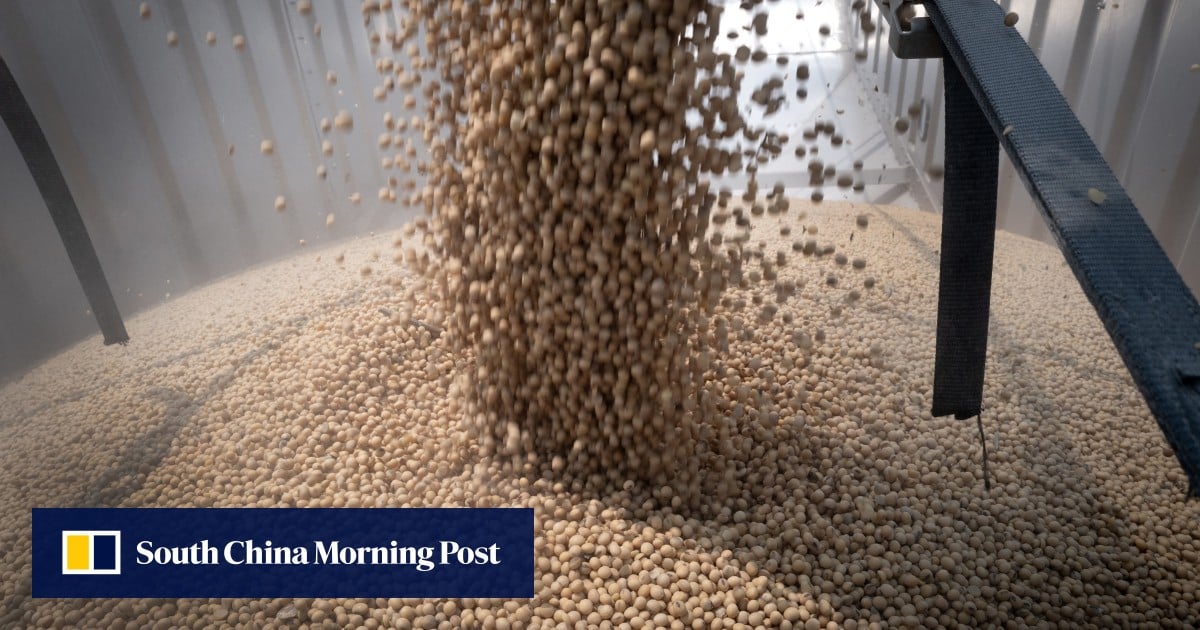Evaluating Farmer-Managed Irrigation in Nepal’s Dhading District – Bioengineer.org

Report on the Performance of Farmer-Managed Irrigation Systems in Dhading, Nepal and Alignment with Sustainable Development Goals
Introduction
A study conducted by R.K. Tandukar and M. Shrestha assesses the performance of Farmer-Managed Irrigation Systems (FMIS) within Nepal’s Dhading district. The research provides a critical analysis of how localized water management strategies contribute to, or hinder, the achievement of several Sustainable Development Goals (SDGs). The findings are situated within the context of pressing global challenges, including climate change, food insecurity, and socioeconomic disparities, which directly relate to the 2030 Agenda for Sustainable Development.
Core Findings and Linkages to Sustainable Development Goals
Challenges in Current FMIS Performance
The assessment reveals significant variability in the effectiveness of FMIS across the Dhading district. This inconsistency poses a direct challenge to achieving sustainable agricultural outcomes. Key issues identified include:
- Inadequate Infrastructure: Many systems rely on outdated technology and suffer from a lack of maintenance and investment, impeding progress towards SDG 9 (Industry, Innovation, and Infrastructure).
- Inefficient Water Management: Sub-optimal water distribution limits agricultural yields, undermining efforts related to SDG 2 (Zero Hunger) and SDG 6 (Clean Water and Sanitation).
- Geographical Disparities: Performance is heavily influenced by local factors such as water availability and management practices, highlighting inequalities that conflict with the principles of SDG 10 (Reduced Inequalities).
Community Participation as a Driver for SDG 11
The research underscores the vital role of community participation in the success of FMIS. Active involvement by local farmers fosters a sense of ownership and promotes sustainable resource management. This participatory approach is fundamental to building resilient and sustainable communities, directly supporting SDG 11 (Sustainable Cities and Communities). When farmers are empowered in the management of their irrigation systems, the systems become more efficient and reflective of local needs, enhancing both social and agricultural resilience.
Strategic Recommendations for Advancing the SDGs
Based on the comprehensive assessment, the study proposes several strategies to enhance FMIS performance and align agricultural practices in Dhading with global sustainability targets.
Modernization and Technological Adoption
To address infrastructure deficits and improve water efficiency, the following actions are recommended:
- Infrastructure Modernization: Increased investment is required to upgrade outdated irrigation systems, which is crucial for achieving SDG 6 by ensuring the availability and sustainable management of water.
- Adoption of Innovative Technologies: Integrating techniques such as drip irrigation and rainwater harvesting can significantly enhance water use efficiency, contributing to climate resilience as outlined in SDG 13 (Climate Action).
- Capacity Building: Establishing training programs for farmers will equip them with the skills to manage modern systems effectively and adapt to climate variability, supporting SDG 1 (No Poverty) and SDG 8 (Decent Work and Economic Growth) through improved livelihoods.
Broader Implications for Global Sustainability
A Framework for Sustainable Rural Development
While focused on Nepal, the findings offer a replicable framework for other regions facing similar agricultural and water management challenges. The principles of community-driven resource management and sustainable irrigation are universally applicable and essential for global food security.
Contribution to Multiple Sustainable Development Goals
The strengthening of FMIS is shown to be a powerful mechanism for advancing a wide range of SDGs, including:
- SDG 1 (No Poverty) & SDG 2 (Zero Hunger): By bolstering local economies and enhancing food security.
- SDG 6 (Clean Water and Sanitation): Through improved water management and efficiency.
- SDG 13 (Climate Action) & SDG 15 (Life on Land): By promoting climate-resilient agriculture and conserving biodiversity.
- SDG 17 (Partnerships for the Goals): By highlighting the need for collaboration between policymakers, researchers, and local communities.
Conclusion
The research by Tandukar and Shrestha provides critical insights into the role of Farmer-Managed Irrigation Systems as a cornerstone for sustainable agriculture. By addressing the identified weaknesses and capitalizing on the strengths of community participation, FMIS can be transformed into a powerful engine for achieving the Sustainable Development Goals. The study serves as a call to action for policymakers to invest in and support local, community-driven solutions that empower farmers, ensure food and water security, and build a resilient and sustainable future.
Analysis of Sustainable Development Goals in the Article
1. Which SDGs are addressed or connected to the issues highlighted in the article?
-
SDG 2: Zero Hunger
- The article directly addresses food security, agricultural productivity, and sustainable agriculture. It states that the research emerges from “the pressing need to enhance agricultural resilience in the face of… food security issues” and aims to sustain “agricultural productivity” to maximize “agricultural yields.”
-
SDG 6: Clean Water and Sanitation
- The core subject of the article is irrigation, which is fundamentally about water management. It discusses issues like “water availability,” “water management,” “optimal water distribution,” and strategies to “enhance water efficiency” through technologies like drip irrigation and rainwater harvesting.
-
SDG 1: No Poverty
- The article connects improved irrigation and agricultural practices to economic well-being. It mentions that strengthening Farmer-Managed Irrigation Systems (FMIS) can “bolster local economies, enhance food security, and improve the livelihoods of countless farmers,” directly addressing the challenge of “rural poverty.”
-
SDG 9: Industry, Innovation, and Infrastructure
- The need for improved infrastructure is a key theme. The article points out that some irrigation systems suffer from “outdated technology,” “lack of maintenance,” and “inadequate investments.” It advocates for “increased investment in… infrastructure” and the “modernization of infrastructure.”
-
SDG 13: Climate Action
- The article frames the research within the context of climate change, highlighting the need for “agricultural resilience in the face of climate change” and helping farmers “adapting to the impacts of climate variability.” It emphasizes the importance of building “climate resilience.”
-
SDG 16: Peace, Justice, and Strong Institutions
- The article underscores the importance of inclusive and participatory management. It highlights that the success of FMIS is linked to “community participation” and ensuring farmers “have a say in the management of their irrigation systems.” This “participatory approach” is presented as a key to sustainability and efficiency.
2. What specific targets under those SDGs can be identified based on the article’s content?
-
Target 2.3: Double agricultural productivity and incomes of small-scale food producers
- The article’s focus on “sustaining agricultural productivity” and maximizing “agricultural yields” for farmers in the Dhading district directly aligns with this target. The goal is to improve the output and economic viability for local farmers who rely on these systems.
-
Target 2.4: Ensure sustainable food production systems and implement resilient agricultural practices
- The article advocates for “sustainable agricultural practices” and building “agricultural resilience in the face of climate change.” The entire study is an assessment of how to make farmer-managed irrigation systems more sustainable and resilient.
-
Target 6.4: Substantially increase water-use efficiency across all sectors
- This target is explicitly addressed through the recommendation to adopt “innovative water management technologies” like “drip irrigation and rainwater harvesting” to “significantly enhance water efficiency.”
-
Target 9.1: Develop quality, reliable, sustainable and resilient infrastructure
- The article identifies “infrastructure quality” as a key challenge, citing “outdated technology” and “lack of maintenance.” The call for “modernization of infrastructure” and “increased investment” directly supports the development of more reliable and sustainable irrigation infrastructure.
-
Target 13.1: Strengthen resilience and adaptive capacity to climate-related hazards and natural disasters
- The research is motivated by the need to enhance “agricultural resilience in the face of climate change” and help farmers adapt to “climate variability.” Strengthening FMIS is presented as a strategy to build this adaptive capacity at the local level.
-
Target 16.7: Ensure responsive, inclusive, participatory and representative decision-making at all levels
- The article strongly supports this target by stating that “community participation” and a “participatory approach” are crucial for the success of FMIS. When farmers have a “say in the management,” it fosters ownership and leads to more efficient and sustainable systems.
3. Are there any indicators mentioned or implied in the article that can be used to measure progress towards the identified targets?
-
Agricultural Yields
- The article mentions that optimal water distribution is “essential for maximizing agricultural yields.” This implies that crop yield per hectare can be used as a direct indicator to measure progress towards Target 2.3 (increasing agricultural productivity).
-
Water Efficiency
- “Water efficiency” is explicitly mentioned as a goal. The adoption rate of technologies like “drip irrigation and rainwater harvesting” can serve as an indicator for progress towards Target 6.4. Measuring the volume of water used per unit of agricultural output would be a direct measure.
-
Quality of Infrastructure
- The article discusses “infrastructure quality,” “outdated technology,” and “lack of maintenance.” An implied indicator for Target 9.1 would be the percentage of irrigation infrastructure that has been modernized or the level of investment allocated to maintenance and upgrades.
-
Level of Community Participation
- The article emphasizes the importance of a “participatory approach.” The level of farmer involvement in the management and decision-making processes of the FMIS can be an indicator for Target 16.7. This could be measured through surveys or by tracking the number of active farmer-led management committees.
4. Summary Table of SDGs, Targets, and Indicators
| SDGs | Targets | Indicators (Mentioned or Implied) |
|---|---|---|
| SDG 2: Zero Hunger | 2.3: Double agricultural productivity and incomes of small-scale food producers. 2.4: Ensure sustainable food production systems. |
– Maximizing agricultural yields. |
| SDG 6: Clean Water and Sanitation | 6.4: Substantially increase water-use efficiency. | – Enhancement of water efficiency. – Adoption rate of drip irrigation and rainwater harvesting. |
| SDG 9: Industry, Innovation and Infrastructure | 9.1: Develop quality, reliable, sustainable and resilient infrastructure. | – Infrastructure quality. – Percentage of modernized systems and investment in maintenance. |
| SDG 13: Climate Action | 13.1: Strengthen resilience and adaptive capacity to climate-related hazards. | – Level of agricultural resilience to climate variability. |
| SDG 16: Peace, Justice, and Strong Institutions | 16.7: Ensure responsive, inclusive, participatory and representative decision-making. | – Level of community participation in FMIS management. |
Source: bioengineer.org

What is Your Reaction?
 Like
0
Like
0
 Dislike
0
Dislike
0
 Love
0
Love
0
 Funny
0
Funny
0
 Angry
0
Angry
0
 Sad
0
Sad
0
 Wow
0
Wow
0







































































